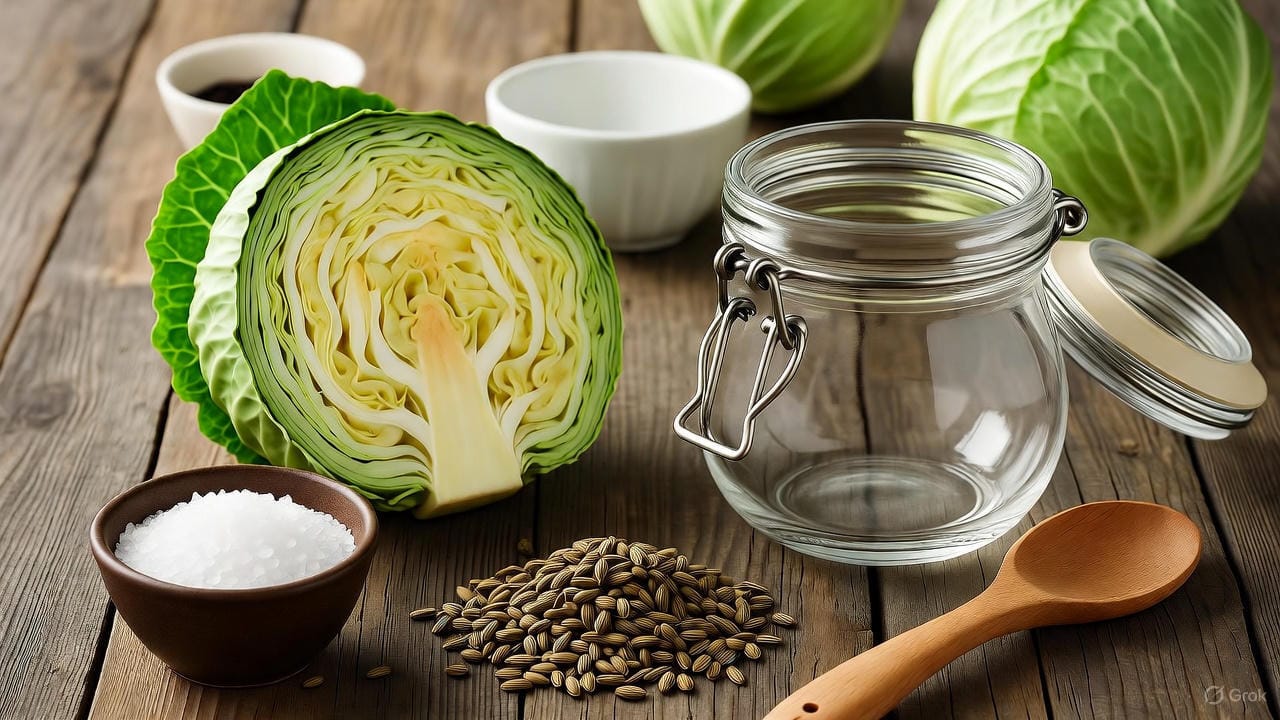- Thomasville Farmers Market Newsletter
- Posts
- Fermenting Fall Foods at Home
Fermenting Fall Foods at Home

Hello, Thomasville Farmers Market Community! 🍁
While our market takes an off-season break, we’re keeping the harvest spirit alive with a dive into at-home food fermentation! It’s a fun, easy way to preserve fall’s bounty, boost your health, and enjoy bold, tangy flavors. Let’s explore what foods you can ferment, the benefits of fermentation, and a simple recipe to get you started.
What Foods Can You Ferment?
The beauty of fermentation is its versatility—almost any fall harvest can be transformed! Here are some favorites:
Cabbage: Perfect for classic sauerkraut or spicy kimchi.
Root Veggies: Carrots, beets, radishes, and turnips make crunchy, colorful pickles.
Apples: Ferment into probiotic-rich cider or tangy chutney.
Peppers: Create fiery hot sauces or milder pickled peppers.
Garlic: Fermented garlic adds a mellow, umami kick to dishes.
Other Options: Try green beans, onions, or even fruits like pears for a sweet-tart twist.
Stock up on these at your local farmers markets that are open during our off-season, or save this for when our market reopens!
Benefits of Fermentation
Fermentation isn’t just about flavor—it’s a powerhouse for health and sustainability:
Probiotics for Gut Health: Fermented foods are rich in beneficial bacteria, supporting digestion and immunity.
Preservation: Extend the life of your fall harvest without canning or freezing.
Enhanced Nutrients: Fermentation can increase vitamins (like C and B) and make minerals more bioavailable.
Eco-Friendly: Reduce food waste by preserving surplus produce.
Flavor Explosion: Develop complex, tangy, umami-rich tastes that elevate your meals.
Simple Recipe: Classic Sauerkraut
Ready to try fermenting? This beginner-friendly sauerkraut recipe is a perfect start.
Ingredients
1 medium head of cabbage (about 2 lbs)
1-1.5 tbsp non-iodized salt (kosher or sea salt, about 1-2% of cabbage weight)
Optional: 1 tsp caraway seeds or juniper berries for extra flavor
Equipment
Clean glass quart jar or fermentation crock
Weight (clean stone, glass disc, or small jar)
Clean cloth or lid for covering
Instructions
Prep the Cabbage: Remove outer cabbage leaves, reserving one. Core and finely shred the cabbage.
Salt and Massage: Place cabbage in a large bowl, sprinkle with salt, and massage for 5-10 minutes until it releases enough liquid to form a brine when pressed.
Add Flavor (Optional): Mix in caraway seeds or juniper berries if desired.
Pack the Jar: Tightly pack cabbage into the jar, pressing down to submerge it in its own brine. Leave 1-2 inches of headspace. Place the reserved cabbage leaf on top to keep pieces submerged, then add a weight.
Ferment: Cover loosely with a cloth or lid (to allow gas release) and store at 60-75°F, away from sunlight. Check daily, pressing down to keep cabbage submerged and skimming any scum if it forms.
Taste and Store: After 3-14 days, taste your sauerkraut. When it’s tangy enough, seal the jar and refrigerate to slow fermentation. Enjoy for months!
Tips: Keep tools clean, and don’t worry about bubbles or funky smells—that’s fermentation at work! Adjust salt or fermentation time to taste.
Get Fermenting!
Fermentation is a delicious way to stay connected to our local harvest, even in the off-season. Try this sauerkraut recipe, experiment with other veggies, and share your creations with us! Tag us on social media with #ThomasvilleFarmersMarket. We can’t wait to see you back at the market when the season kicks off again!
Stay tangy,
The Thomasville Farmers Market Team🥕